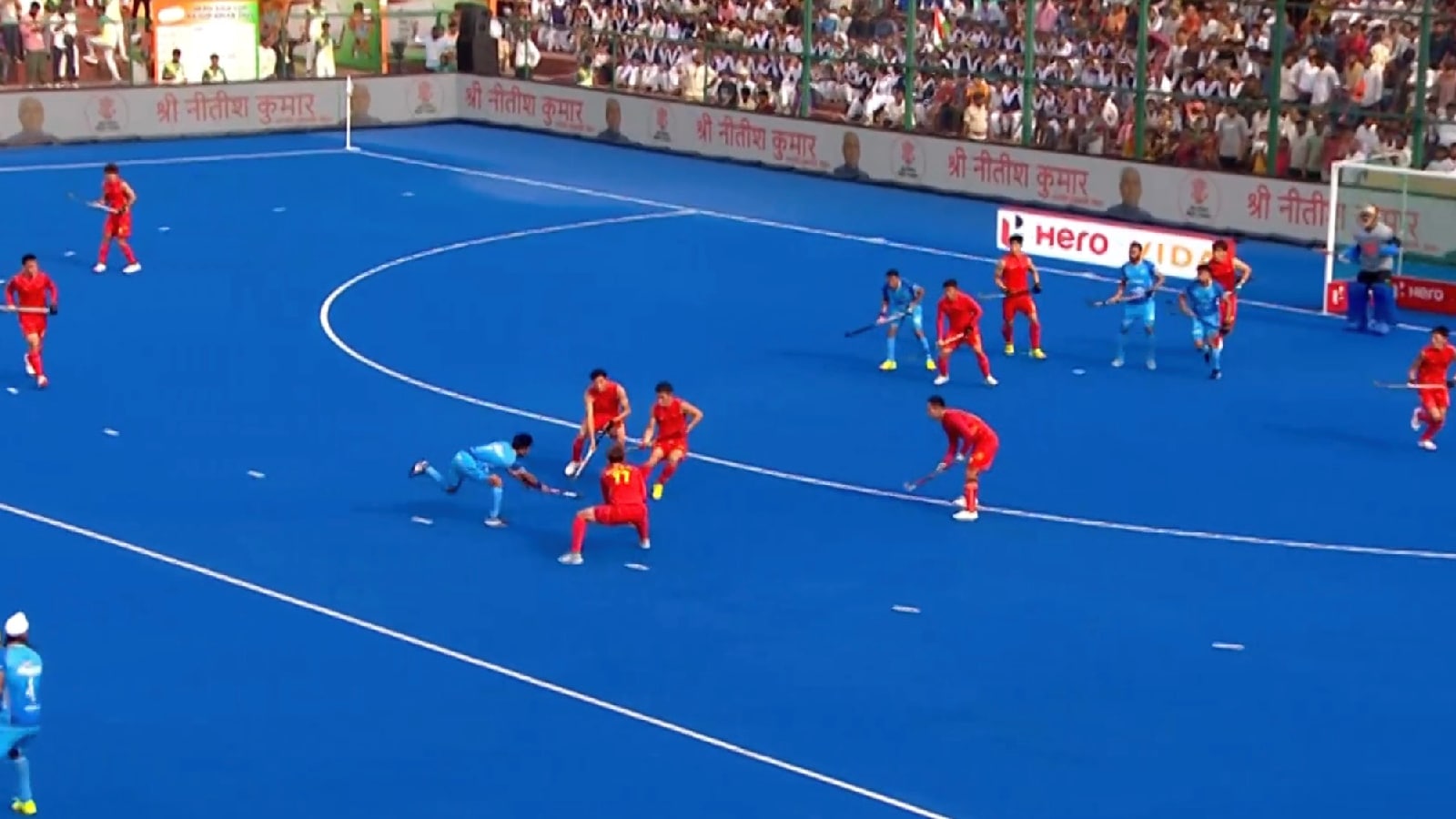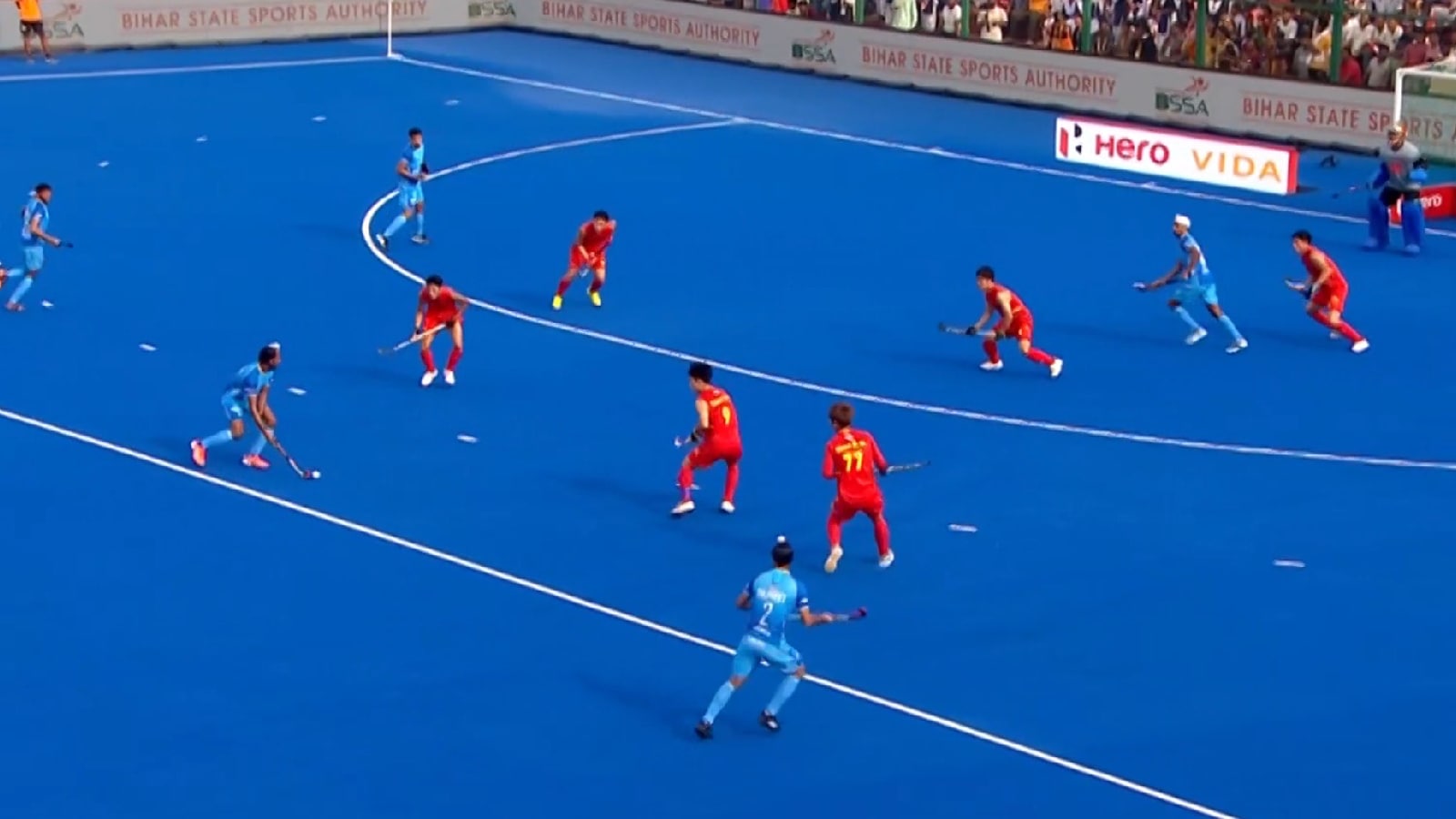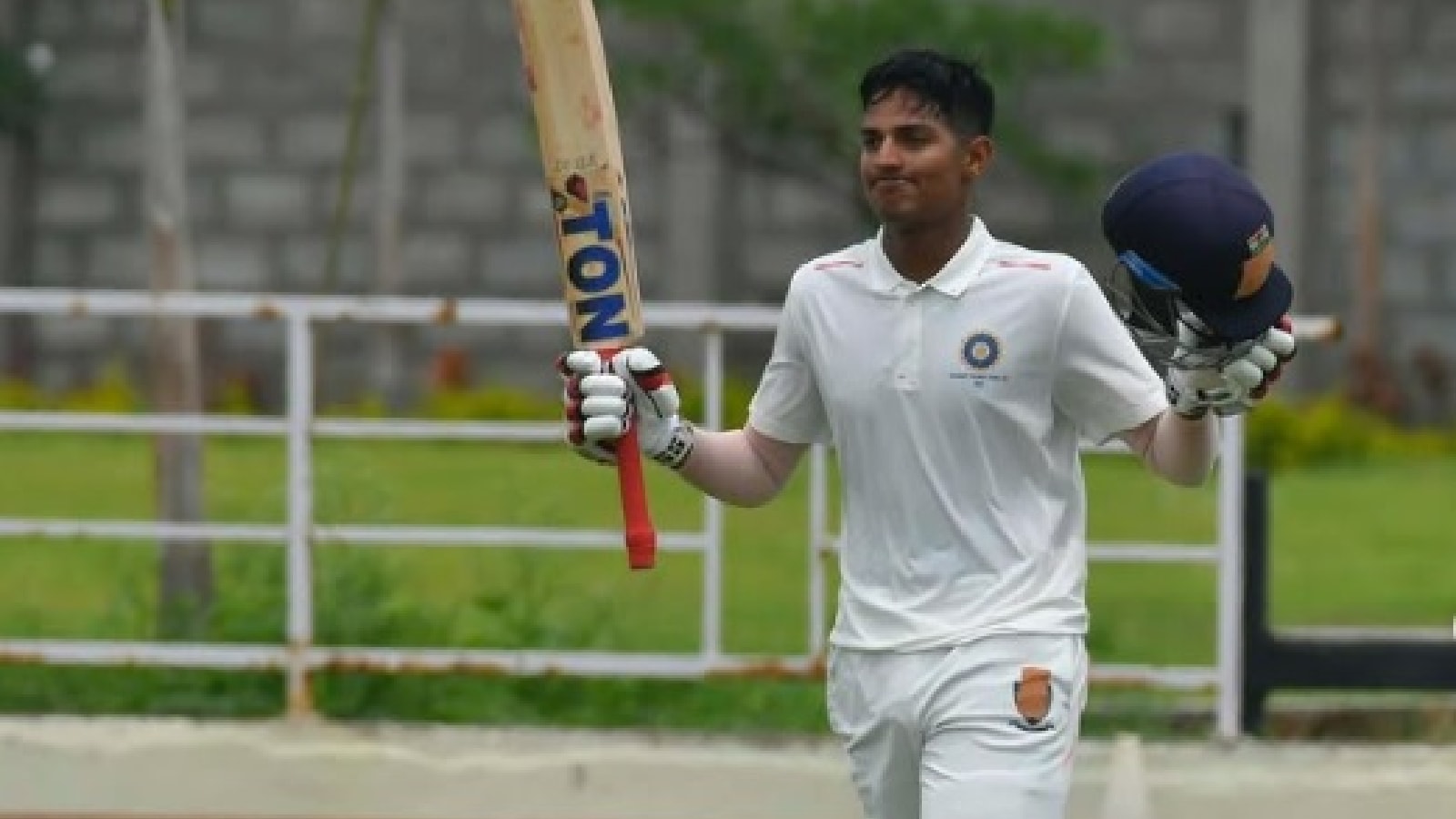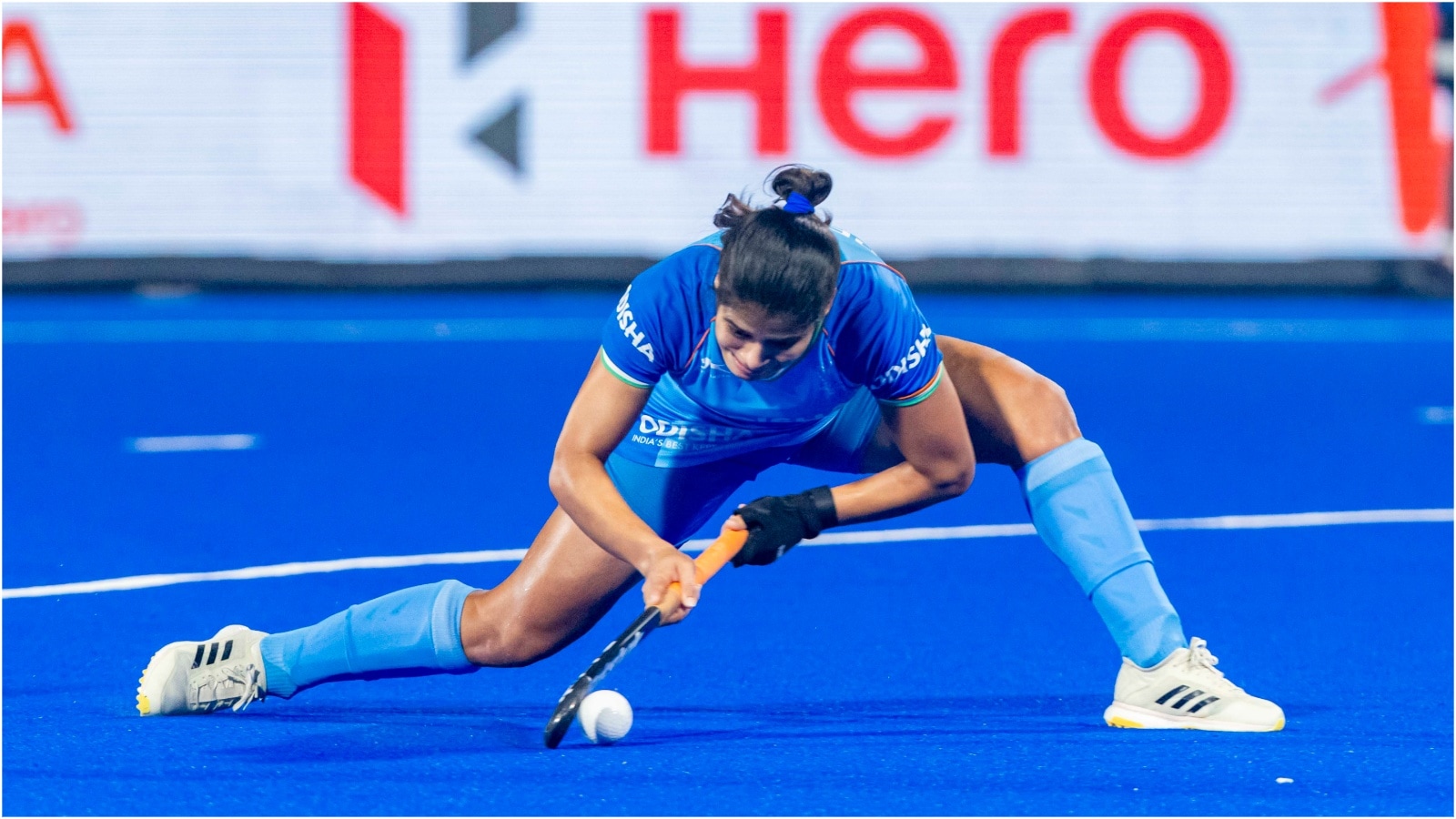ARTICLE AD BOX
Manpreet Singh looked up and all he could see was a sea of red.
Three players lunged to close him down; three others shadowed the Indian forwards inside the shooting circle. A little to his right, one red shirt was on the edge of the ‘D’, another slightly behind him to cover any overlapping run, and two more were checking the wide runs from the left flank. Behind all of them, the goalkeeper stood his ground.
Between the Indian midfielder and the goal, roughly 20m away, there were 11 Chinese players. It was Manpreet’s ingenuity that he still found the foot of a Chinese defender, resulting in a penalty corner that Jugraj Singh converted to level the scores at 1-1.
 All 11 Chinese players were behind the ball when Manpreet Singh marched forward in the second quarter in the Asia Cup opener on Friday. (Screengrab)
All 11 Chinese players were behind the ball when Manpreet Singh marched forward in the second quarter in the Asia Cup opener on Friday. (Screengrab)
Five minutes later, Hardik Singh faced a similar predicament. The India vice-captain was roughly around the same position as Manpreet — 23m from the goal, running through the centre. In front of him were two waves of red. The first defensive line of three defenders was at the dotted line just in front of Hardik. The second, also comprising three defenders, was inside the ‘D’, tightly marking the Indian attackers. He had few options to pass, but Mandeep Singh used his wit to evade his marker and make himself available. Hardik played the ball to him, Mandeep earned a corner, which Harmanpreet Singh converted to put India ahead.
 Hardik Singh had to confront two waves of Chinese defence as he tried to pass the ball forward. (Screengrab)
Hardik Singh had to confront two waves of Chinese defence as he tried to pass the ball forward. (Screengrab)
For the majority of the 60 minutes in their Asia Cup opener, which they won 4-3, India had to find answers to similar questions: a low Chinese block and blind man-to-man marking. The insufferable Rajgir heat and a slow surface only added to their challenge. The last two points partly explain why the team — which often enthralls with high-energy hockey — looked lethargic and moved the ball relatively slowly.
For the majority of the 60 minutes in their Asia Cup opener, which they won 4-3, India had to find answers to similar questions: a low Chinese block and blind man-to-man marking.
As the tournament chugs on, there could be some respite from the heat — Sunday’s game against Japan will be the last time India will play at 3pm, the rest of the games will be under the lights after sunset. And the more they play, the more they’ll adapt to the pace of the turf — India train on a fast surface at their Bengaluru base and most of the international tournaments are also played on quick turfs.
In Rajgir, a team official pointed out, the ball glided at a much slower pace than the players are used to. For a team that swears by high-speed hockey, likes to move the ball around the pitch and plays fast passes, this is a disadvantage as it makes India’s attack slower.
Story continues below this ad
The Indian team doesn’t seem too bothered by the pace of the surface, which they feel is something they’ll get accustomed to. However, the team is wary that most teams will play a low-block against them, like China did. Unless a team decides to be brave and take the game to India, most matches over the next week are likely to follow Friday’s template.
For India, that’ll be playing out of their comfort zone. The Harmanpreet Singh-led side has charted its way back to the Olympic podium by playing fast, counter-attacking hockey. That’s when they are the most dangerous. Scrambling, stealing and speeding forward. It allows the players to use the full range of their skills and the style generally suits them against the structurally-disciplined European sides, who aren’t afraid to commit forward, and the ever-aggressive Australians.
But the situation flips the moment India is challenged by their opponents to take the initiative. It’s when India are forced to play counter-intuitive hockey; a test of patience. That’s when they also suffer a lot more on the pitch.
This isn’t a new problem. Think of Canada at the 2016 Rio Olympics. Or Malaysia at the 2018 Asian Games. Or Argentina at the Paris Olympics.
The situation flips the moment India is challenged by their opponents to take the initiative. It’s when India are forced to play counter-intuitive hockey; a test of patience. That’s when they also suffer a lot more on the pitch.
Story continues below this ad
The problem becomes more prominent when playing against the Asian teams. Partly, because India’s encounters against their continental rivals are often reduced to once-a-year competitions. There are no Asians in the Pro League and India has not been to the Azlan Shah Cup for a few years so the meetings are largely restricted to the Asian Games, Asian Champions Trophy, or the Asia Cup.
The Malaysias, South Koreas and Japans of world hockey are practical enough to realise that they’ll only invite trouble if they play free-flowing, expansive hockey against India and so, they sit deep in their half, smother the Indian attackers and then try to hit them on the counter.
“When we are playing these teams, a lot of thinking goes into how to create space because they will play a low-block and mark man-to-man. Bilkul chipak ke (they’ll be glued to us)… blindly mark, if our attacker goes out of the ‘D’, they’ll follow us out,” says an Indian team member.
The member adds: “Sometimes, it is beneficial. If the teams employ blind man-to-man marking in low defence, then we can create space by drawing the defenders out of their position.”
Story continues below this ad
Like they did against China, India will have to keep switching flanks, make the opposition move and chase the ball and find the gap to play the final pass inside the ‘D’. “It requires a lot of patience. We aren’t used to playing like this because in the Pro League and other tournaments, very few teams defend so deep,” the member said.
India play the patience game better now and are often able to ram through the stubborn defences, like they did in the last two Asian Champions Trophies and the Asian Games.
But the oppressive heat in Rajgir and the slow surface will add to the complexities. India had ride past a sea of red on Friday. In Japan, they are likely to run into another one on Sunday.
Playing on Sunday:
1pm: China vs Kazakhstan
3pm: India vs Japan
Matches live on Sony Sports Network



.png)
.png)
.png)
























 English (US) ·
English (US) ·